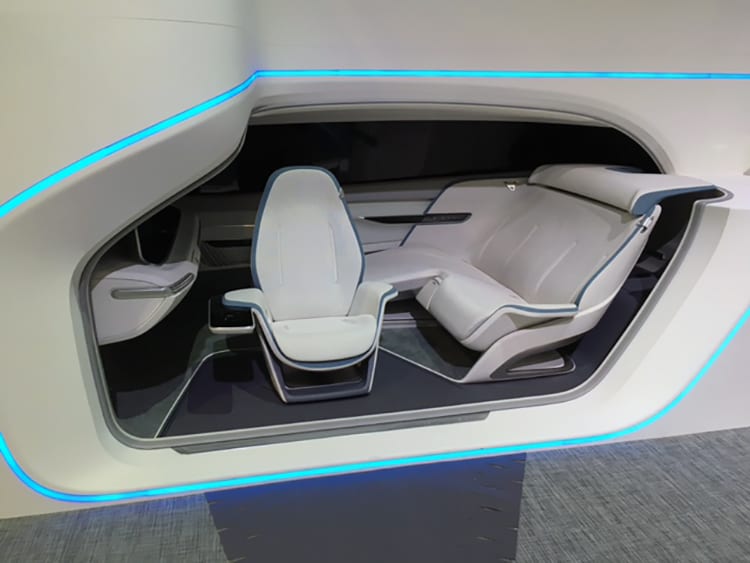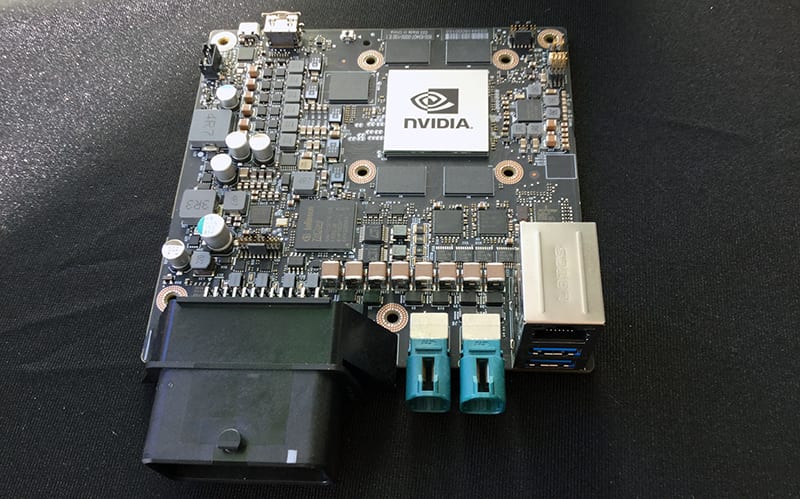The Pebble Beach 180; CES is About the future, not the past

LAS VEGAS — Delphi Automotive is here. “Making it possible” shouts the sign on its tent across from this city’s convention center. So is BMW, whose nearby tent proclaims, semi-dyslexically, “BMW Inside Future.”
And so are Hyundai, Honda, Nissan, the Detroit Three and every other major auto maker and components company. They’re right alongside a host of stalwarts (Google, Cisco, etc.) and startups from Silicon Valley and around the world.

Welcome to CES, now in its 50th year and formerly known as the annual Consumer Electronics Show before switching to its initials. Nowadays the name might well be Car Extravaganza Showcase. Automobiles — driverless cars, connected cars, electric cars and even flying cars — have moved to the forefront here. CES is a complete 180 on the Pebble Beach Concours d’Elegance and other classic-car shows; it’s all about cars of the future instead of cars of the past. There’s hope, hype and hints of upheaval.
Faraday Future, backed by a Chinese billionaire and based in Los Angeles, unveiled its FF 91 electric car that will sell for $180,000 when production starts in 2018, if the company can survive financial and other challenges. The long, low-slung vehicle, is supposed to go 378 miles between charges on motors that generate 1,050 horsepower (gulp!).
Its autonomous (i.e. driverless) features will let it drop you off and go park itself, and be summoned back on your smartphone. The FF 91 doesn’t have door handles because the doors will open automatically as the driver — whom it will recognize — approaches.
Startup Lucid Motors is taking a different tack, says chief technology officer Peter Rawlinson, who was chief engineer on the Tesla Model S after stints at Jaguar and Lotus. To Lucid, Rawlinson explained, electric-car batteries must not only go long ranges between charges, but they also must be able to operate nearly around the clock.
The company envisions driverless electric cars ferrying people to their destination and then picking up and dropping off a succession of other passengers, with very little downtime in between trips. Rawlinson said: “The electric vehicle, the connected car, the ride-share model, the autonomous car — all those things are happening concurrently against a backdrop of social change.”

A Chinese outfit (there are many here) named EHang went further still, unveiling a personal-transport drone, aka a flying car. The EHang 184 will fly at low altitudes for 30 minutes at about 65 miles an hour. Expected price: $200,000 to $300,000. Expected launch date: who knows? The company is seeking approval to sell the EHang 184 in several countries, but there are “regulatory issues,” one employee diplomatically explained.
Back on Earth, Volvo, whose SUVs serve as driverless Uber cars in Pittsburgh, announced it will install Skype for Business in its high-end models to let drivers dial in and out of conference calls by touching their in-dash screen. And Honda announced a new dashboard app to allow people to pay for gasoline and parking from the touch screens in their cars. And so on.
Automobiles and other futuristic transport don’t hog the entire show here; there are still plenty of gadgets — eccentrical, whimsical, useful — that have been CES’s hallmark since it began, quaintly, as a radio and TV exhibition in 1967. PuddingBeanQ is, according to its makers, an “adorable smart robot from China that tells children stories, teaches them math, answers their innumerable questions “why,” and encourages “proper posture and hygiene.”
Speaking of which, PhoneSoap 2.0 says it’s “the first and only cell phone charger that cleans and sanitizes your phone while it charges.” Another company called Whoosh posted signs in bathrooms at the sprawling Las Vegas Convention Center offering free high-tech phone cleaning to those who’ve been texting on the toilet. (Useful, no doubt.)
Just when some or all of the futuristic personal transport displayed here might go mainstream was hotly debated here at a full day of panel discussions here conducted by Deloitte, the big consulting firm. With talk of “new mobility ecosystems” and “tomorrow’s transportation ecosystem,” the word “ecosystem” emerged as the new, um, paradigm in consultant-speak. But the discussions weren’t all buzzwords.
“Autonomous technology and everything it stands for is the space race of the 21st Century,” declared Anand Shah of Albright Stonebridge Group, a global strategy consulting firm in Washington. With driverless-car experiments underway in Singapore, Finland and America — and places in between — he added, “Driverless cars will be here two years from now. Between 2025 to 2030, probably toward latter end of that period, most people will start wondering whether they should own a car.”

No way, said Ralph Nader, who also spoke at the Deloitte event. “The complexity of all the sets of variables is almost mind-numbing,” the consumer advocate and frequent car critic declared. “I call it the arrogance of the algorithms…As for replacing the entire car fleet in the next 30-40 years with autonomous vehicles, it’s not gonna happen.”
One thing beyond dispute was the intrusion of present reality into futuristic vision. Despite all the talk of high-tech mobility, the 200,000 attendees at CES jammed the streets of Las Vegas with old-fashioned traffic jams. Some attendees had to wait more than an hour at the airport to get a taxi ride to their hotel.
The futurists, though, were undeterred. NVIDIA, a Silicon Valley company, unveiled a new artificial-intelligence brain for driverless cars that it named Xavier (as opposed to Hal, the killer computer in the sci-fi movie 2001 A Space Odyssey.) Xavier is half the size of an iPad mini, the company says, and can conduct 30 trillion “operations” per second to sense what’s going on around it and determine how to react. (Sounds like a giga-mega-lot.)

NVIDIA installed Xavier in an Audi Q7 SUV and offered conventioneers driverless rides around a parking lot outside the convention center. Those who rode in the autonomous Audi got a bumper sticker that said: “My Other Car Drives Itself.”